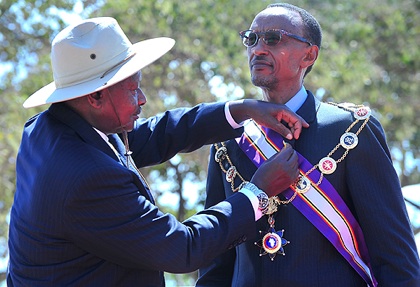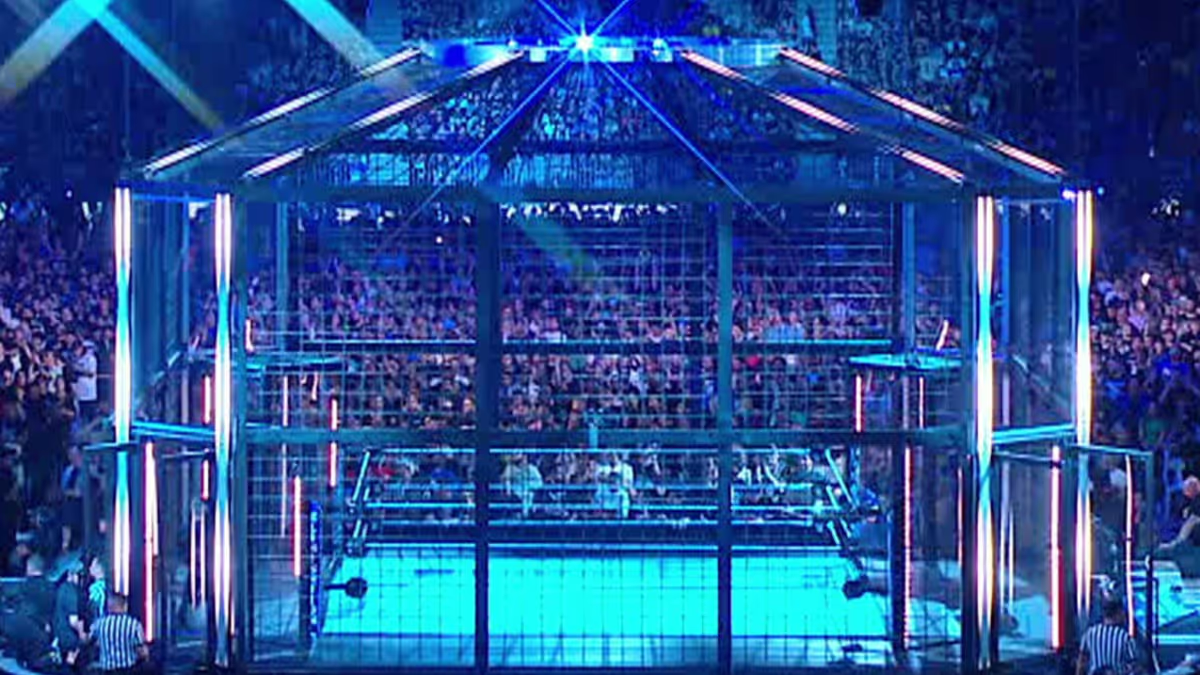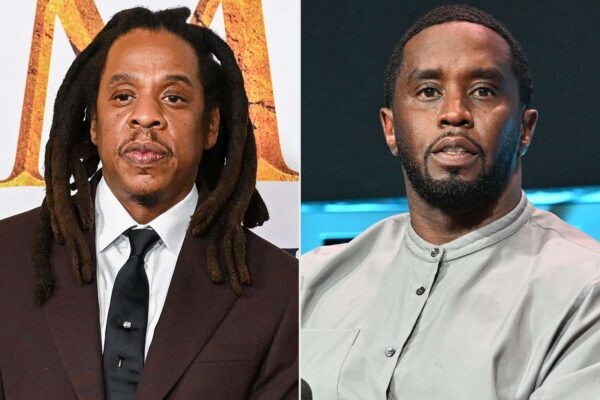Museveni’s and Kagame’s regional militarism exhausted?
[Black Star News Editorial]
Congo’s nightmare is at a crossroads.
The defeat of M23 by Congo’s army and a UN force in key battles is welcome. Yet, for lasting peace in the region, the military victories must be followed by opening up of political space in Rwanda and Uganda.
These are the two countries that have launched numerous wars of aggression against Congo since 1997 when dictator Mobutu Sese Seko was ousted after the first invasion from Rwanda and Uganda.
The two countries turned the mineral-rich eastern part of Congo into a killing field. Estimates of Congolese dead as a result of multiple invasions by the armies of Rwanda and Uganda range from six to 10 millions. This rivals the number of Congolese who perished under the diabolic reign of Leopold of the Belgians.
Yet it was a lucrative genocide. It allowed the armies of Rwanda and Uganda, and the militias they created, to roam freely in Congo. The political and military leadership in the invading countries plundered hundreds of millions of dollars in mineral wealth.
Congo has not had a moment to breath since the end of Belgian colonial rule.
In the 1960s, post independence, nationalist prime minister Patrice Lumumba who insisted on Congo for the Congolese was murdered due to Belgian and U.S. intrigue.
Belgium wanted a neo-colonial relationship to allow it to continue exploiting Congo’s resources. Separatists like Moise Tshombe were promoted by the Belgians and Western corporate interests.
Eventually, Mobutu was installed as dictator after engineering Lumumba’s murder. He bilked an estimated $5 billion from the country while institutions of governance and the formal economy collapsed. He changed the name of the country to Zaire. He declared that without Mobuttu there would be no Zaire.
He was right, even though he never imagined it would end the way it did.
After the 1997 invasion, Rwanda and Uganda installed Laurent Kabila in power. When Kabila wanted to exercise control, Rwanda and Uganda invaded a second time to install a pliant leader. Kabila was rescued by Zimbabwe’s air force and by Angola’s tank divisions. However he did not escape bullets from assassins.
The war split the country, with Rwanda and Uganda occupying the mineral rich zones across their borders.
The greed of the political and military leadership in Rwanda and Uganda knew no bounds. The national armies of Rwanda and Uganda fought pitched battles against each other, on Congolese soil. They contested over who would control the diamond and gold regions. They killed Congolese and destroyed the city of Kisangani.
As the looting proceeded, in the meantime, Congolese were massacred and mass raped.
Uganda was found liable by the International Court of Justice (ICJ) for what amounted to war crimes by its army in Congo and ordered to pay $10 billion in reparations. Separately, the International Criminal Court (ICC) started an investigation of war crimes. The probe was placed on abeyance. The Wall Street Journal reported that Uganda’s Gen. Yoweri Museveni urged Kofi Annan, then UN Secretary General, to block the investigation. (It’s no coincidence that the Ugandan general is now orchestrating a campaign, through the African Union, to discredit the ICC while appearing to be championing for Uhuru Kenyatta. Gen. Kagame may also fear being exposed to war crimes charges).
Rwanda’s Gen. Paul Kagame’s army exacted vengeance over Hutus who had fled from the 1994 massacres in Rwanda. The United Nations so-called Mapping Report concluded that Rwanda had committed what amounted to war crimes against Hutus, including children, women and elderly men, who had fled to Congo.
Yet for years both Rwanda and Uganda were given blank checks, especially by the United States, to commit mass crimes against Congo and to fleece the country.
Uganda had provided troops to act as as proxy army in Somalia, which the U.S. feared would come under the total control of Islamists affiliated with al-Qaeda. Rwanda sent peace keeping soldiers to Sudan’s Darfur region under the UN helmet.
The armies of Rwanda and Uganda participated in “peace keeping” missions while committing war crimes in Congo.
Western corporations were beneficiaries of the fleecing of Congo, also explaining the motive for the silence in London, Paris, and Washington as rivers of blood covered eastern Congo. Both Rwanda and Uganda exported hundreds of millions of dollars annually of minerals that neither country produced.
A relative calm had set in place for a brief period.
But, Rwanda and Uganda had been busy training, arming, financing, and commanding M23, according to a United Nation’s Group of Experts’ Report. Initially then-U.S. ambassador to the United Nations, Susan Rice, tried to block the damning report but it was leaked by France.
The report found that M23’s chain of command led all the way to Rwanda’s chief of military staff, then to the defense minister, who in turn reports to Gen. Kagame.
When M23 invaded Congo and seized the city of Goma in 2012, it was accompanied by Rwanda’s regular army soldiers, according to the Group of Experts’ Report.
The time the condemnation was swift, sharp and sustained. The Rwanda-backed army committed their signature atrocities: massacres of civilians; displacements of hundreds of thousands; mass rapes, including of infants; assassinations of government officials in Goma; and, the looting of the Central bank, and ferrying millions of dollars in cash across into Rwanda.
This time the countries that normally turned a blind eye to the Rwanda- and Uganda- sponsored atrocities demanded that they order M23 to withdraw from Goma. Corporate media also published critical articles by writers who had been exposing atrocities for years.
Leaving no doubt as to who was primarily held responsible, President Barack Obama phoned Gen. Kagame and warned him against supporting M23 in December 2012.
The U.S. also followed by cutting some foreign military assistance to Rwanda last year; more recently, military aid was cut when the U.S. publicly accused Rwanda of deploying child soldiers.
Yet the most significant development was when the UN Security Council authorized creation of the UN force, of about 3,000, that’s allowed to engage in combat. (This is in addition to the nearly 15,000 peace keeping force already stationed in Congo.)
It was this force, comprising Tanzanians and South Africans, fighting with Congo’s army, that pushed back M23 towards the borders with Rwanda and Uganda.
M23’s real leadership, which includes Gen. Kagame, Gen. Museveni and their top army commanders are angry that Congo, the UN and the U.S. have ruled out amnesty for M23 commanders who are responsible for some of the worst human rights abuses. They were hoping that seizing territory would improve their bargaining position in talks being held in Kampala, Uganda’s capital.
M23’s field commanders also know too many secrets and fear they wouldn’t be safe in Rwanda and Uganda.
Where now from here?
Any escalation in fighting would be a result of direct invasions from Rwanda and Uganda with likely serious consequences for both Kagame and Museveni.
Gen. Kagame and Gen. Museveni have both promoted permanent chaos in Congo as a way to: keep their large armies busy; to plunder Congo’s resources; and, to divert attention from political repression within their own respective countries.
Both Kagame and Museveni can no longer avoid the elephant in the room; they must open the political space within their countries and end military tyranny.







